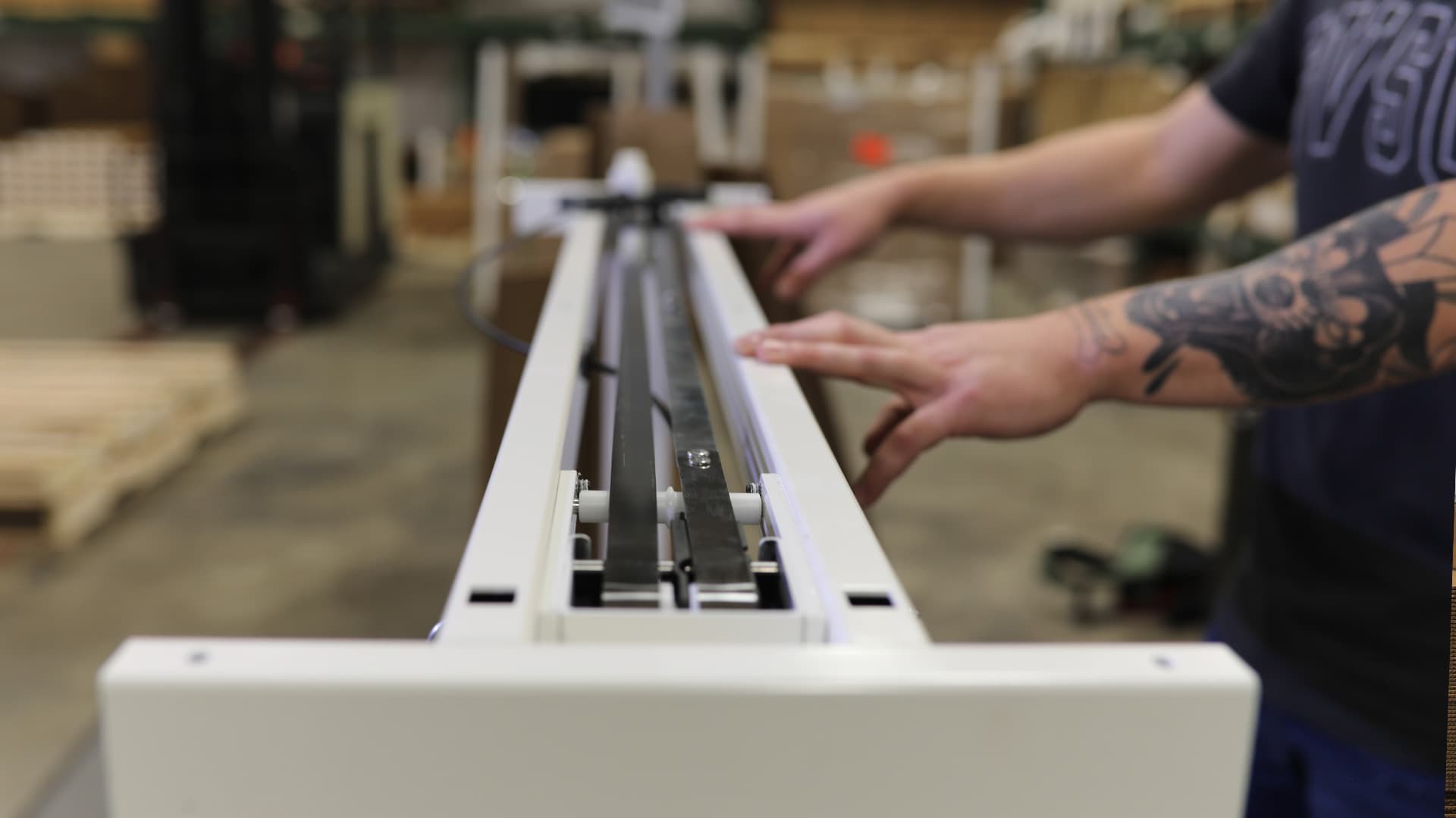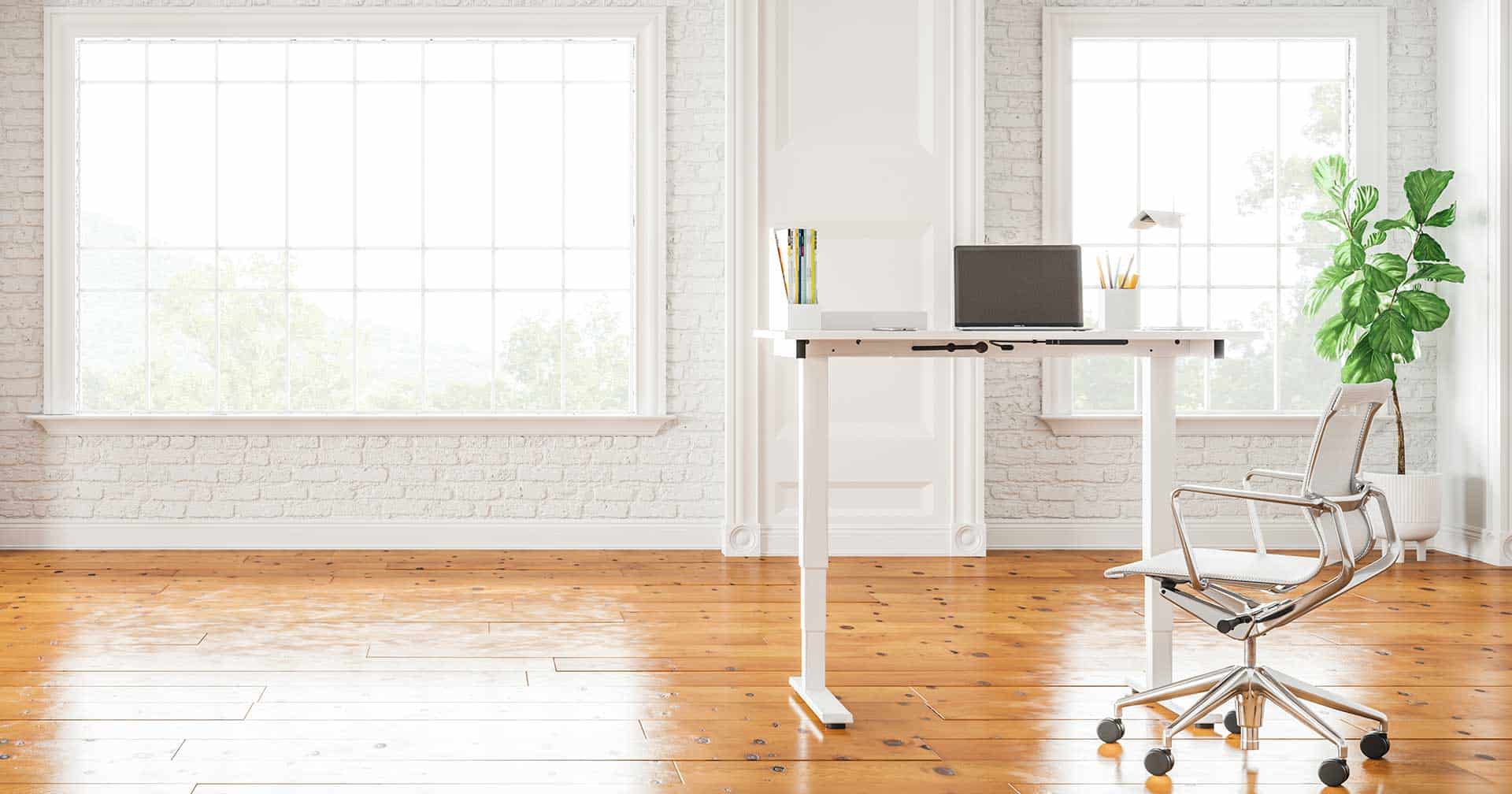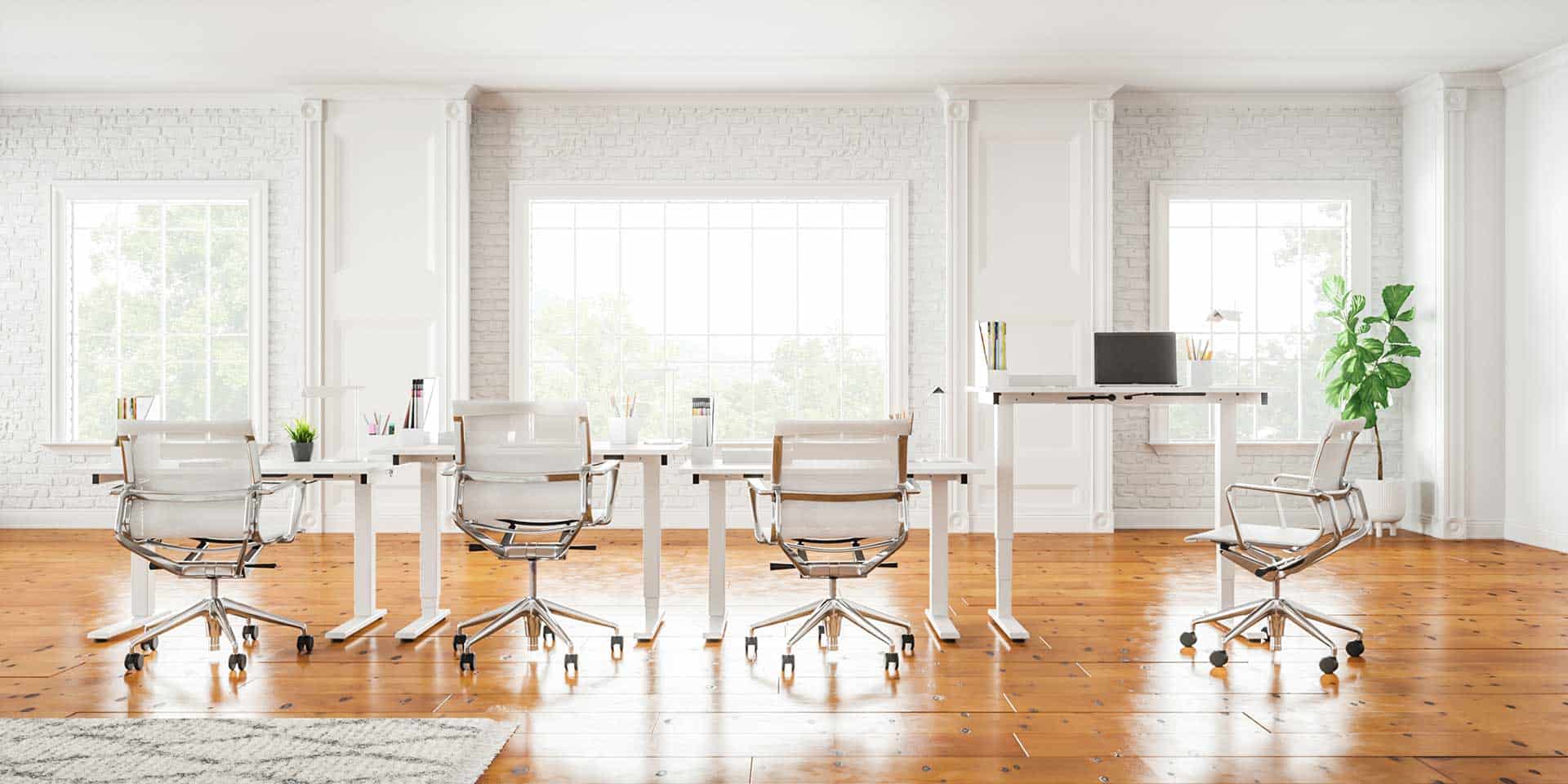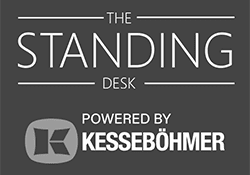Top 3 Advantages of a Counterbalanced Desk
When searching for a standing desk, you’ll come across a special category called a counterbalanced desk. Especially if you’ve never heard the term “counterbalanced desk,” it can be hard to picture, but the technology makes these some of the best height adjustable tables available.
What is a counterbalanced desk?
Counterbalance refers to the mechanism used to raise and lower a height adjustable table. There are a few ways to create a counterbalanced mechanism, but in general each one uses springs or pneumatic systems to offset the weight on the work surface.

How does a counterbalanced desk work?
You can think of counterbalance as a force or weight that offsets or mitigates another force or weight. In the example of a counterbalanced desk, a pneumatic cylinder offsets the weight on the desk. A counterbalanced desk merely takes advantage of basic principles of Newtonian mechanics that make motion control easier, allowing operation of the desk with little or no effort on the part of the user. But it does look a little like magic.
Counterbalanced desks are operated in one of two ways: by a pneumatic (gas cylinder) or a spring tension mechanism to raise the work surface. Spring tension mechanisms are more limited in their weight capacity and adjustability.
With a double acting pneumatic cylinder, air is supplied to chambers on either side of a piston. When compressed air enters the chamber on one side of the piston, the piston moves and toward the other side and produces force. For a pneumatic counterbalanced desk, the volume of the cylinder should correspond to the total weight of the desktop that needs to be moved.
Pneumatic desks are usually either single leg or double leg. For desks with a double leg system, when one control leg begins to move, the mechanical system forces the other to move in tandem.

What is the advantage of a counterbalanced desk?
The counterbalance mechanism serves two purposes: to counteract downward force and to provide balance for user control. A counterbalanced desk gives you:
- Ease. Although the desk and its contents weigh 100 lbs., you may only feel 2 pounds of applied force when you try to raise it.
- Control. The counterbalance mechanism creates a constant counter weighing force, so the surface moves smoothly between standing and sitting height and back, preventing uncontrolled drops while safely holding the weight. The controlled movement minimizes stress on the moving parts. Our counterbalanced desks are designed to move up and down smoothly even when the load is off center.
- Safety. Counterbalancing prevents sudden movement. Our pneumatic desks incorporate a safety feature so the desk can only be adjusted when the desktop and its contents are counter balanced properly.
In the end, the design of a counterbalanced desk makes it easier to lift and support a heavy load.

How do other desks work?
There are other types of desks out there besides counterbalanced desks. Stationary desks don’t require a lifting mechanism at all of course, because they don’t move. But if you want the freedom of a height adjustable table, the alternative to a counterbalanced desk is an electric model or a hand crank model.
A hand crank desk relies primarily on arm strength to adjust the height of the load, which can make them difficult to adjust and control, and limits their load capabilities.
An electric desk relies on electrical power. Electric desks don’t require counterbalancing, and they may be able to move heavy loads without balance adjustment. Electric desks can be great for very heavy or highly variable loads, as long as you have power nearby. But for an office worker with a couple of monitors and some desk essentials, a counterbalanced desk is quick, easy, and safe. Because a pneumatic counterbalanced desk requires little effort to adjust, the sit and stand transitions require less investment, and the habit will be easier to maintain.
A final note
If you choose a single leg or double leg counterbalanced desk, be sure to choose one that can be adjusted to the right height for you both sitting and standing. The counterbalance should be calibrated to accommodate the amount of weight you’re going to place on the desktop, or should allow manual adjustment of the weight.
All other things being equal, a counterbalanced desk proves its worth when it comes to quick, quiet operation with maximum control and minimum effort.
This is The Klöud
A weight-adjustable, counterbalanced power-free standing desk.
It’s one of a kind





